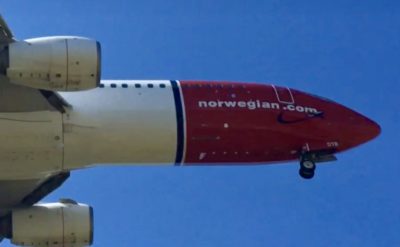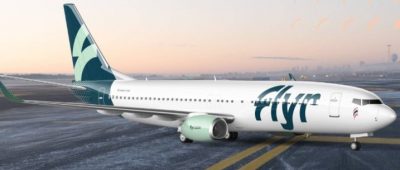Norwegian Air has managed to attract new core investors willing to put up around NOK 6 billion in fresh capital, all aimed at finally clearing the long-struggling airline for a new take-off. Several other rival airlines are also keen to start spreading their wings, even though studies show that many Norwegians are likely to travel much less than they did before the pandemic.

“It can seem like there’s an insatiable appetite for airline shares,” Robert Næss, investment director at the large Nordic banking and finance firm Nordea, told newspaper Dagens Næringsliv (DN) recently. Nordea is among those recapitalizing Norwegian Air as it emerges from bankrupcty with a much smaller fleet of aircraft and route plan. Other investors in the “new” Norwegian Air include shipping tycoon John Fredriksen, the wealthy Sundt family, DNB Asset Management and Ludvig Lorentzen. Norwegian Air founders Bjørn Kjos and Bjørn Kise have also invested in the recapitalization.
“It was important for us to have cornerstone investors who signaled strong interest for our business plan,” Norwegian Air’s finance director Geir Karlsen told DN on Tuesday. He and the CEO Jacob Schram have been working around the the clock for the past year to keep Norwegian Air from being permanently grounded, and now hope to again be offering regular airline service within Norway and Europe this summer.
Enter Norse Atlantic
Norwegian Air’s intercontinental routes have all been dropped, and picked up along with much of Norwegian’s fleet of long-haul aircraft by the new start-up carrier Norse Atlantic Airways. It managed to raise, in just an hour, more than the NOK 1.3 billion it sought earlier this spring. It intends to start flying over the Atlantic, filling the gap left by Norwegian Air’s own low-fare trans-Atlantlic service, assuming it secures entry into the US.

Norse Atlantic faces challenges, however, raised by Congressman Peter DeFazio, leader of the transport committee, who fears a reprise of the “Norwegian fiasco” and “unfair competition” since Norse Atlantic will, like Norwegian did, hire in low-paid crews from international crewing agencies. DeFazio warns that both Norwegian and Norse Atlantic are “Norwegian in name only,” noting how both were and are registered in Ireland to avoid strict Norwegian labour law.
Bjorn Tore Larsen, leader of the start-up Norse Atlantic, claims it has “no connection” with Norwegian and “will of course compete within the applicable regulatory framework.” Two of its founders, however, are Kjos and Kise of Norwegian Air, who have both invested in the new trans-Atlantic airline. There’s also been speculation Norse Atlantic and a newly recapitalized Norwegian Air will eventually merge, but that’s been rejected by both companies.
Another new domestic start-up airline called Flyr (Fly), founded by an heir of the former Norwegian Airline Braathens SAFE has also raised around NOK 600 million in capital earlier this year and aims to take off with its first flight, between Oslo and Tromsø, in late June. Flyr plans to acquire a fleet of up to 30 Boeing 737-800 aircraft within the next three years, flying between seven cities in Norway where train travel is not an option, plus five cities abroad including Nice, Malaga and Alicante.

Flyr will be competing head-on with the “new” Norwegian Air, the long-dominant SAS and now also WizzAir, the low-fare Hungarian airline that uses low-cost eastern European crews and has infuriated Norwegian trade unions and lots of politicians. Several communities and organizations are boycotting WizzAir, which flies around Europe and wants to expand with domestic service in Norway.
‘Blood-bath’ predictions
All the budding airline service in Norway is raising questions over whether they can all survive in a post-pandemic market. “It’s going to be a blood-bath within the domestic service,” predicts Professor Frode Steen at business school NHH in Bergen. He told DN last winter that it’s highly uncertain whether Flyr, for example, can become a profitable airline in a market bound to be characterized by low fares.
“Flyr is and will be a copy of Norwegian Air,” Steen said. “Many have tried to start up airlines. It’s very expensive. I have a healthy skepticism towards the project.” He also noted that rival Wizz “has deep pockets and can hold out longer even if they lose money in Norway.” Flyr’s new CEO Tonje W Frislid claims Flyr has a competitive advantage as a new player without heavy debt that’s been able to acquire aircraft on reasonable terms. She thinks Steen is too pessimistic on Flyr’s behalf.
Travel demand reduced
All the airlines, however, face an uncertain and potentially turbulent market. DN was the first to report as early as last December how a survey conducted by the state public health institute FHI showed that fully a third of all Norwegians will travel less in the future. Subsequent studies and surveys including one by the University of Tromsø indicate the same: Digital meetings will replace the need for lots of the travel that was routine before Corona hit. Both private businesses and the public sector have discovered how much money they can save by not traveling during the Corona crisis. Oil company Equinor, telecoms giant Telenor and Norway’s biggest bank DNB are among large companies saying they intend to cut pre-pandemic travel levels by half even after travel restrictions are lifted.
Many travelers and companies also cite climate goals and the need to keep carbon emissions low. “We’re supposed to be carbon neutral by 2030 and that includes emissions from business travel,” Anne Flaggstad of Telenor told DN in March. “Our goal is to fly 50 percent less that the average of the three years prior to the pandemic.”
Of all the airlines serving Norway, venerable SAS is likely to get hit the hardest by that, according to Professor Steen. It once used the now unpolitically correct slogan “the businessman’s airline,” and its business market segment has been largest. SAS, recovering itself from the pandemic and with a new CEO coming on board, counters that its position in the business market is “an old stereotype” and that it actively goes after pleasure “travelers” as well.
Holiday spending is also expected to fall again dramatically this year and may stay low. The sheer desire to fly has been dramatically reduced during the pandemic, and many people are reluctant to face crowds at airports or close quarters on board flights even after travel restrictions are lifted. State health officials have warned that some restrictions will likely continue for years to come.
That’s bad news for airlines, but others scoff at the gloomy outlook. Investor Jan Petter Sissener, who’s taken stakes in some of the new airline recapitalization, warns against underestimating “travel-hungry Norwegians” who traveled often before the pandemic and are eager to take off again as soon as it’s allowed.
Asked why he invested NOK 30 million in the Flyr start-up, Sissener told DN “simply because we’re sitting in a country with 5.4 million travel-hungry people.” They’re going to want to jump on a jet again, he predicts, at the earliest opportunity.
newsinenglish.no/Nina Berglund

